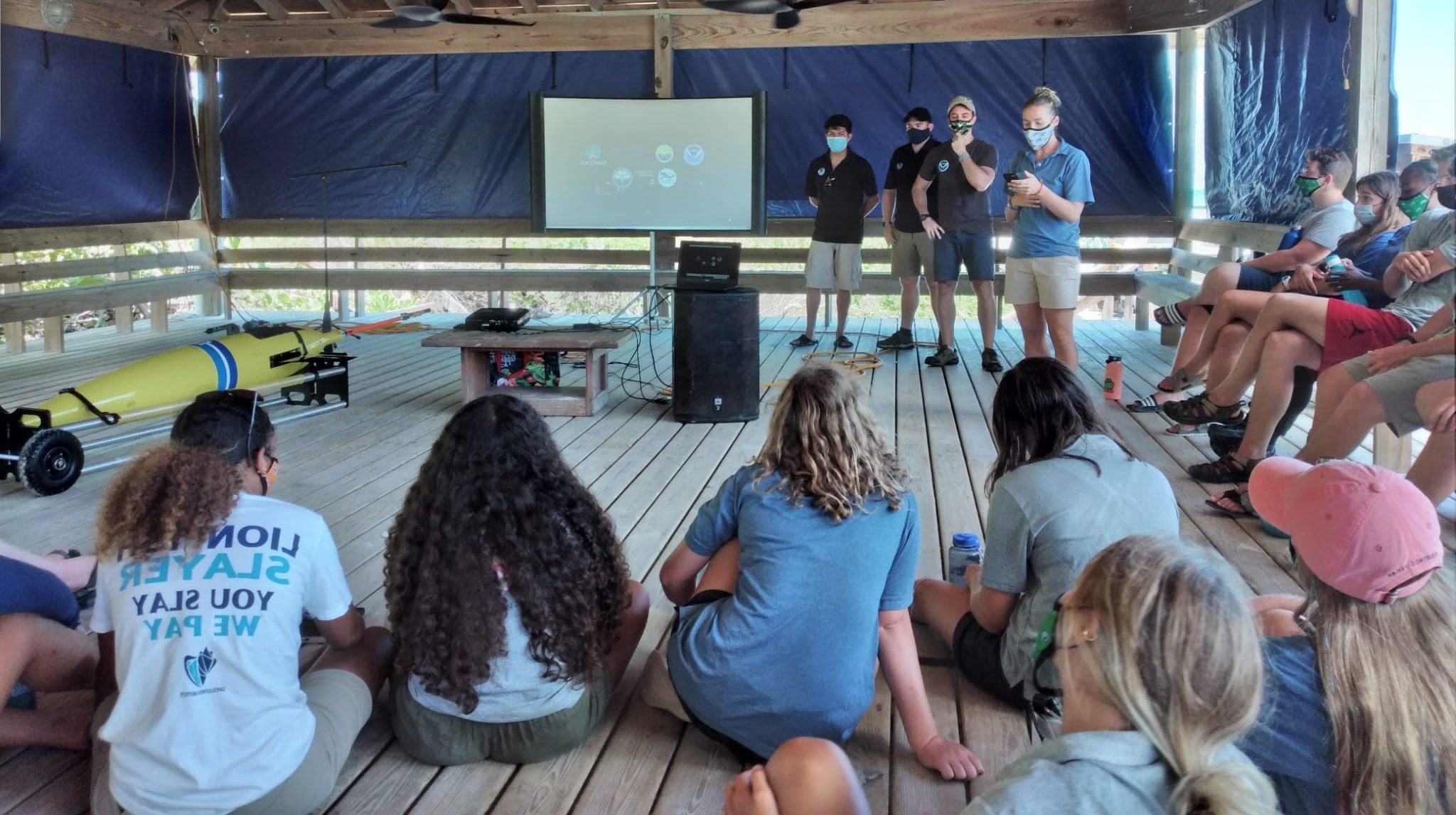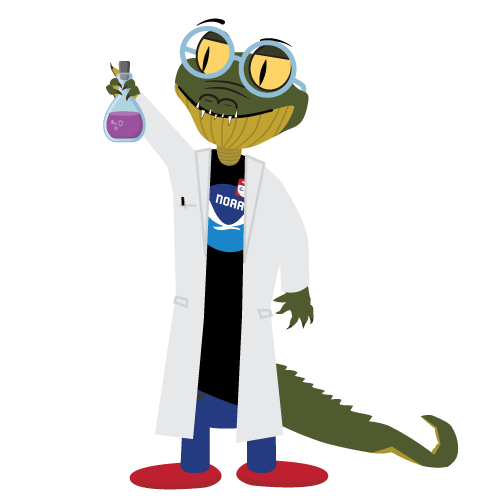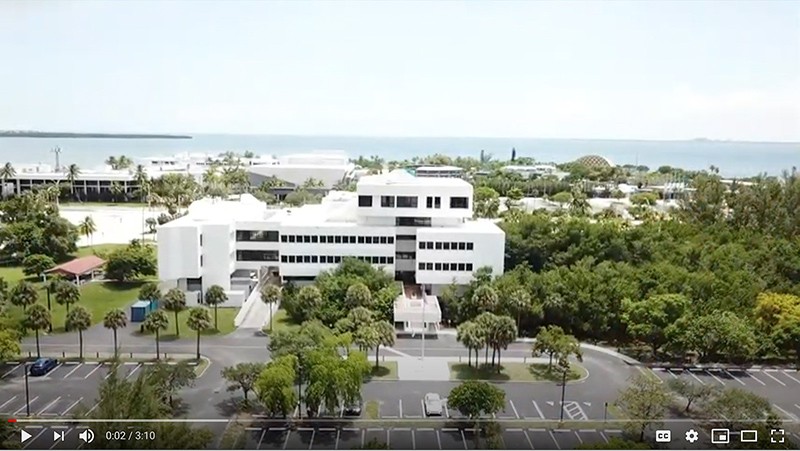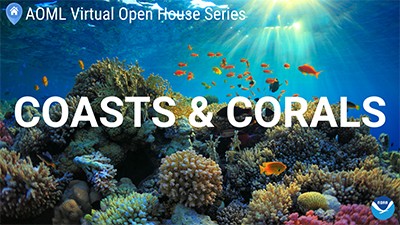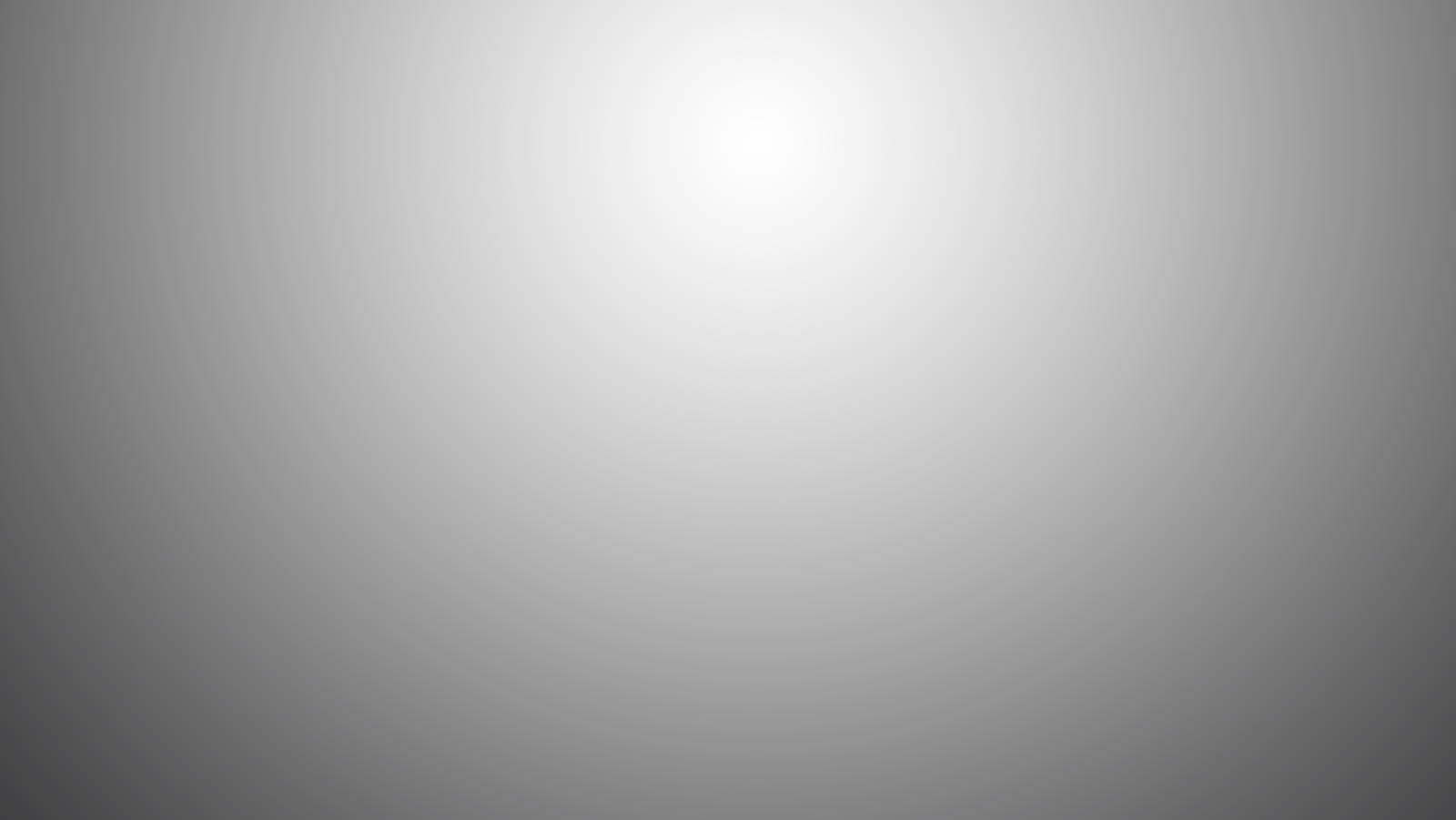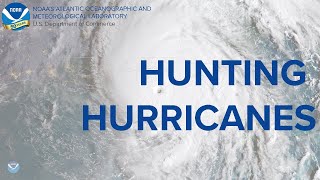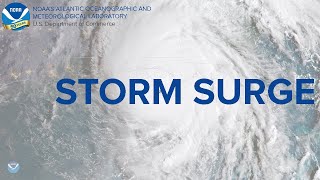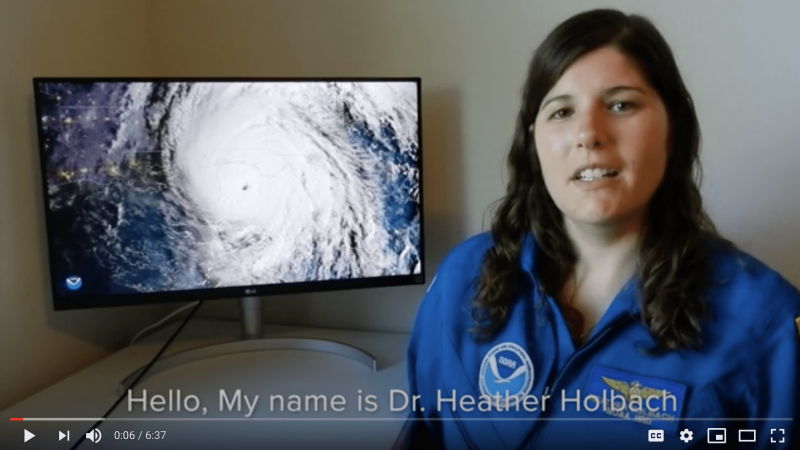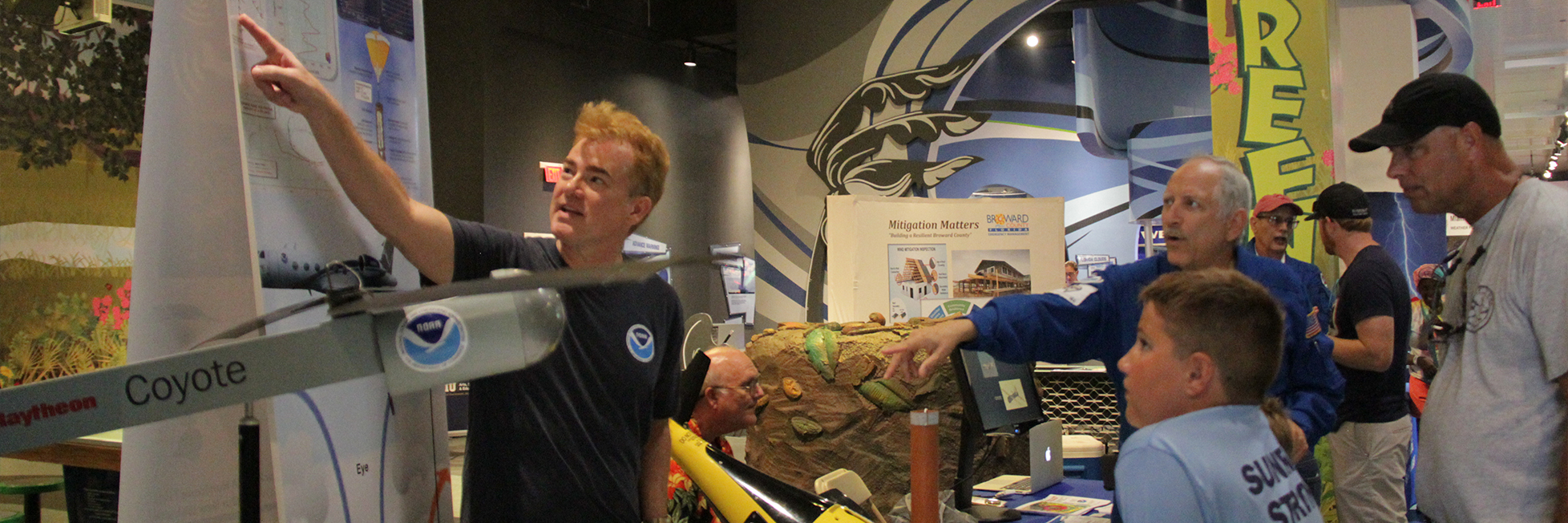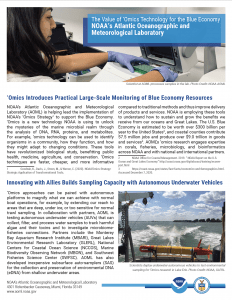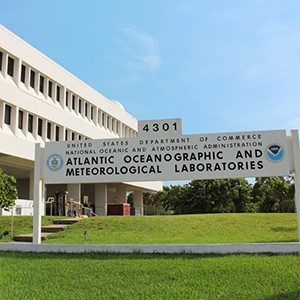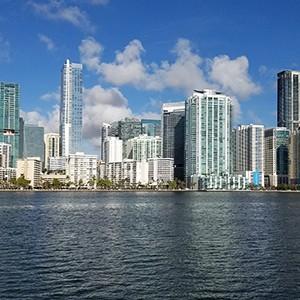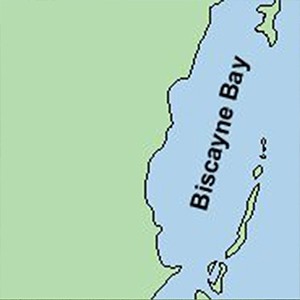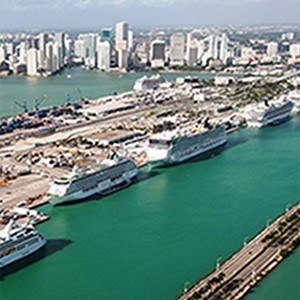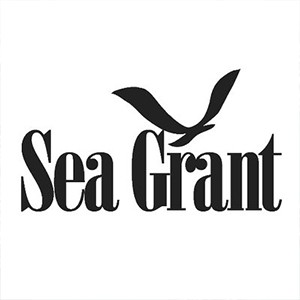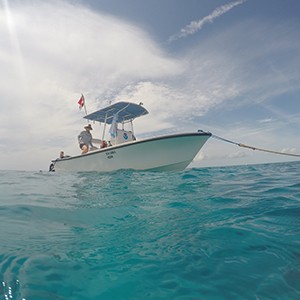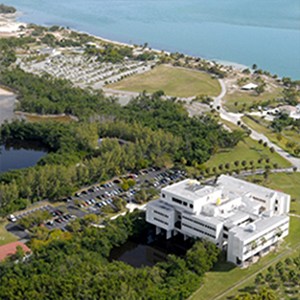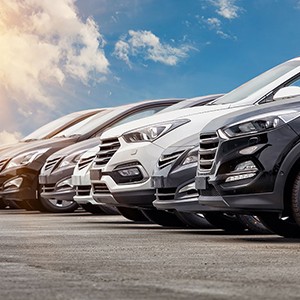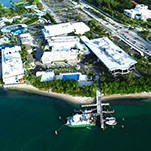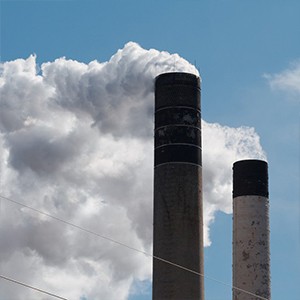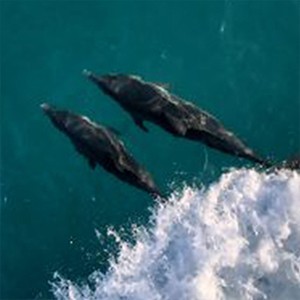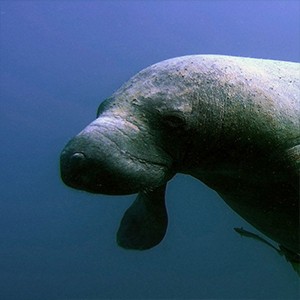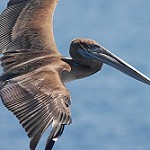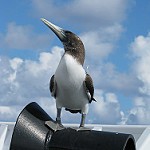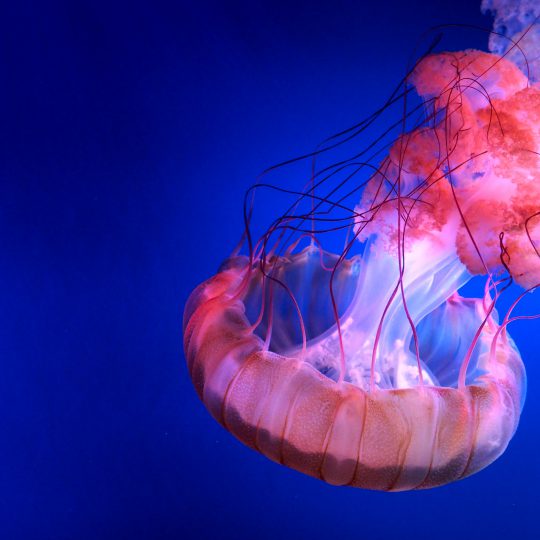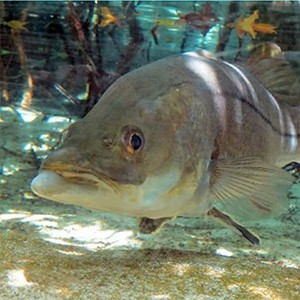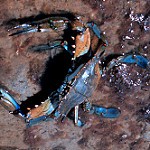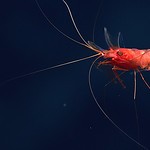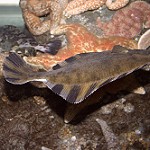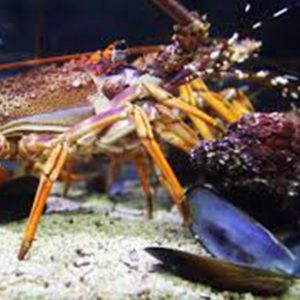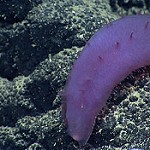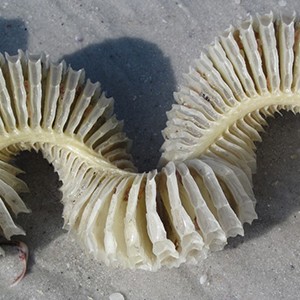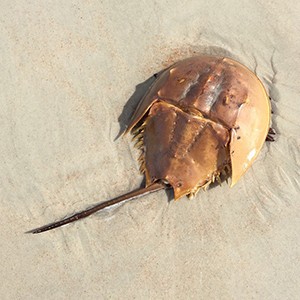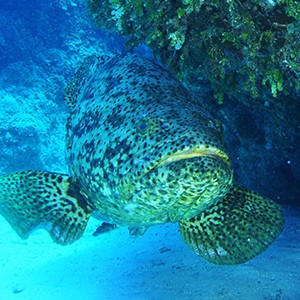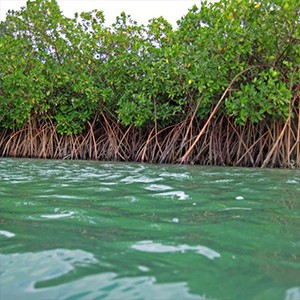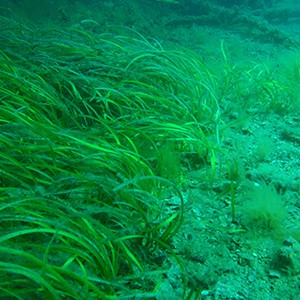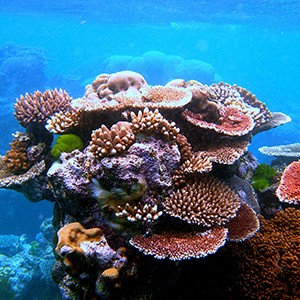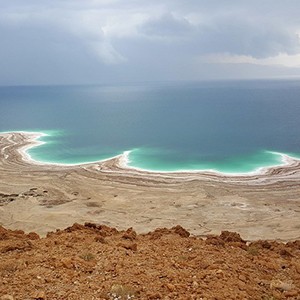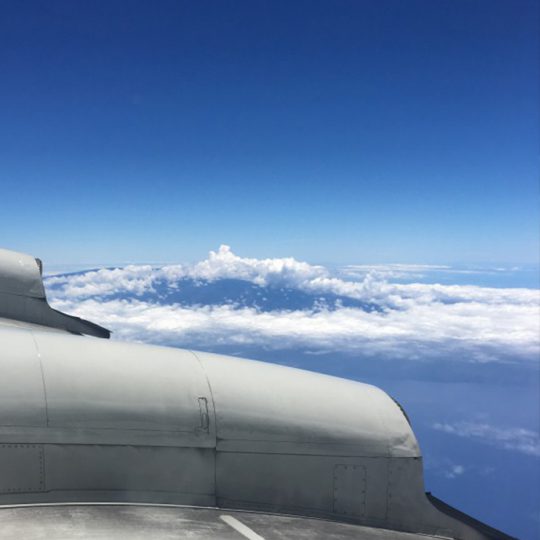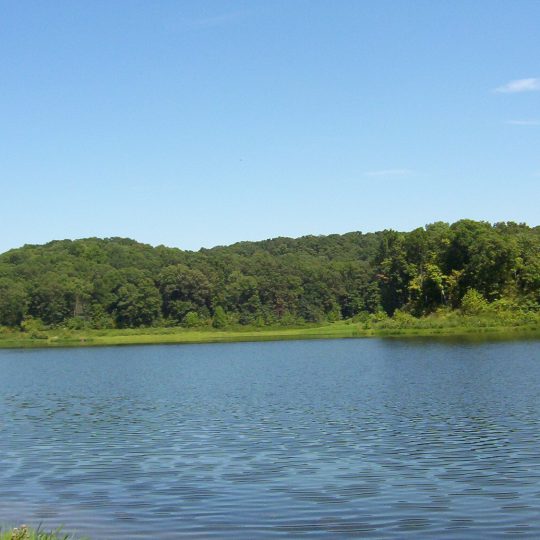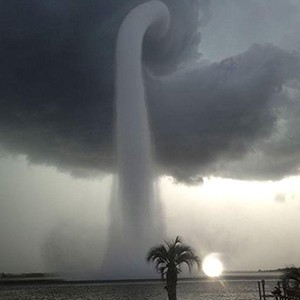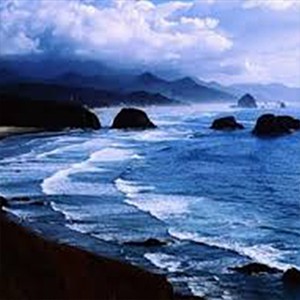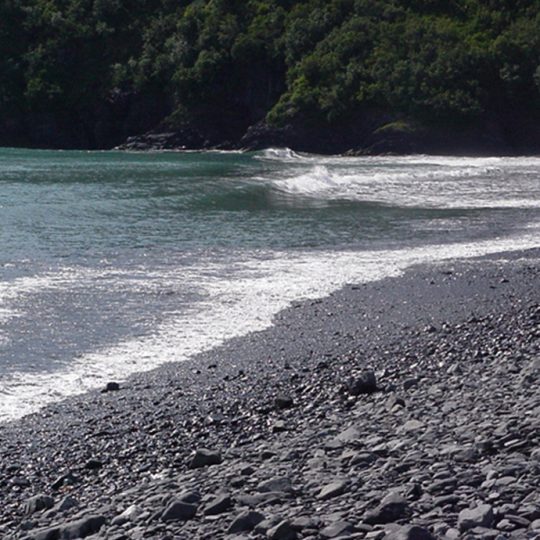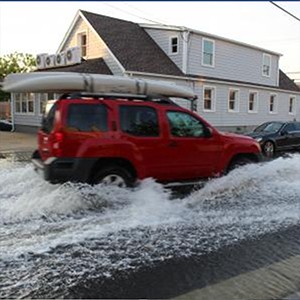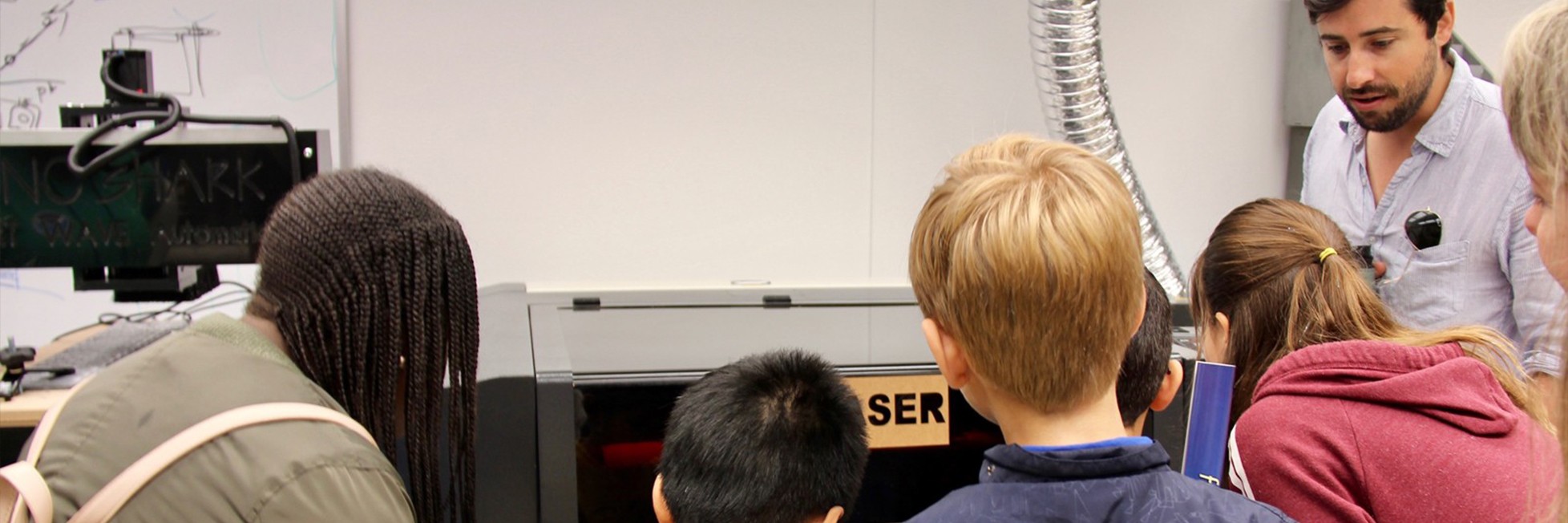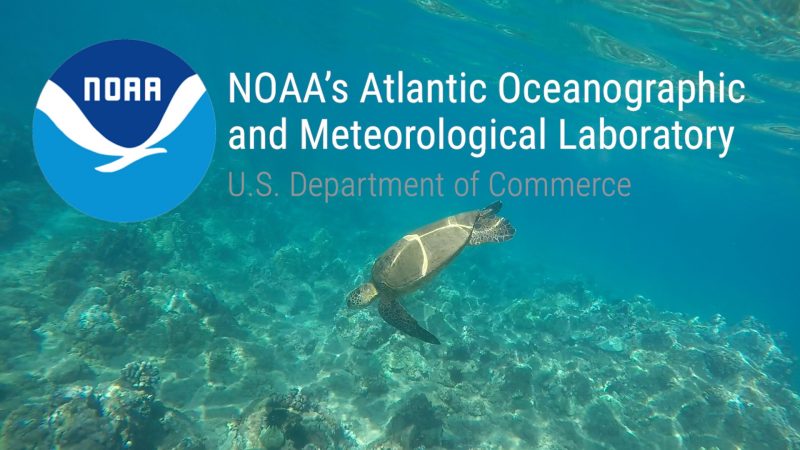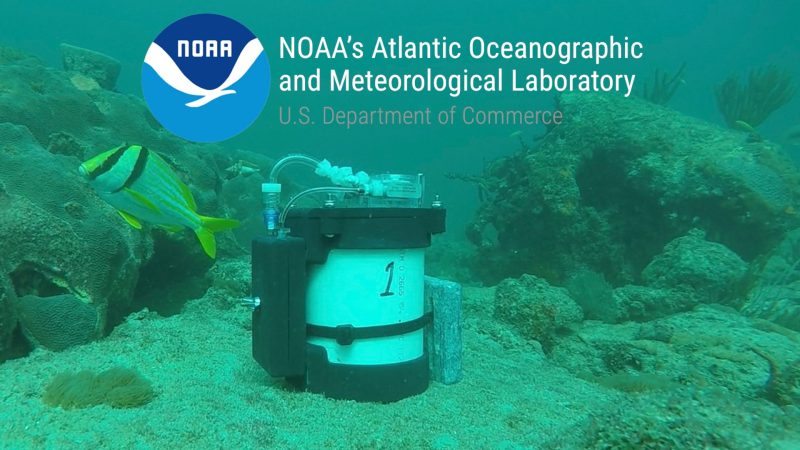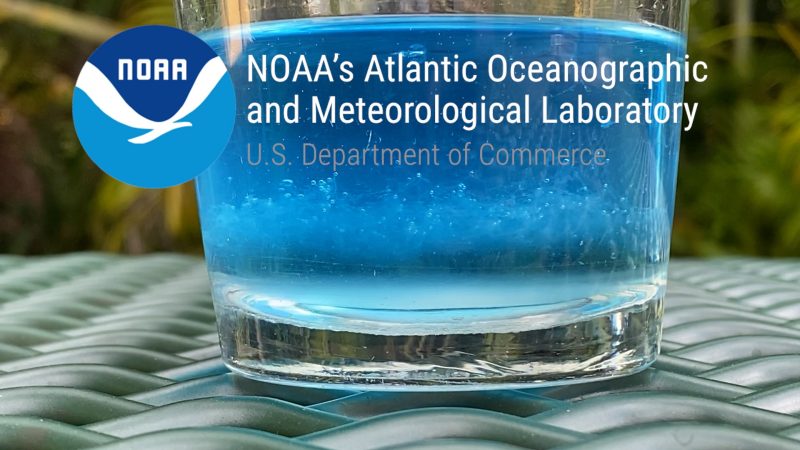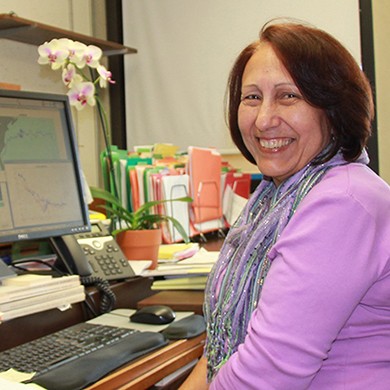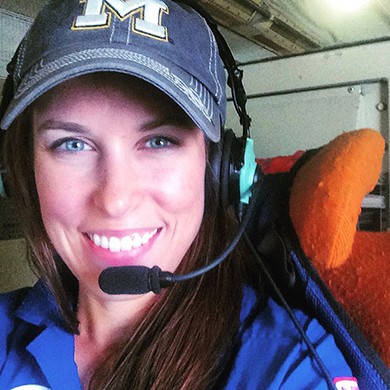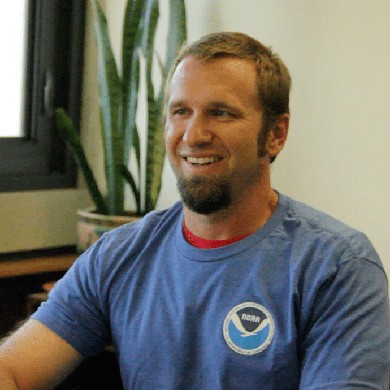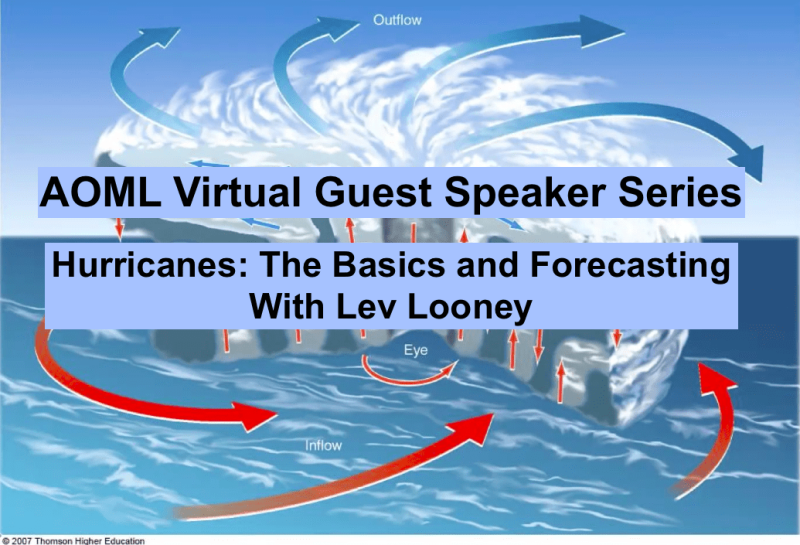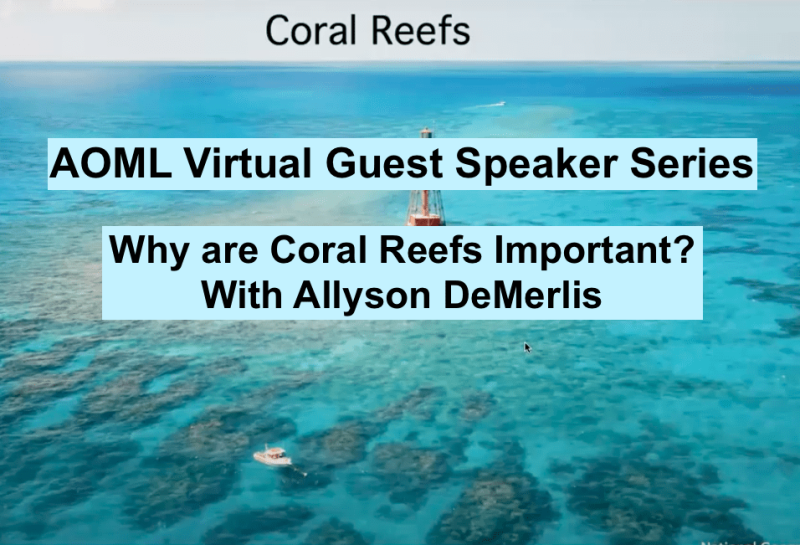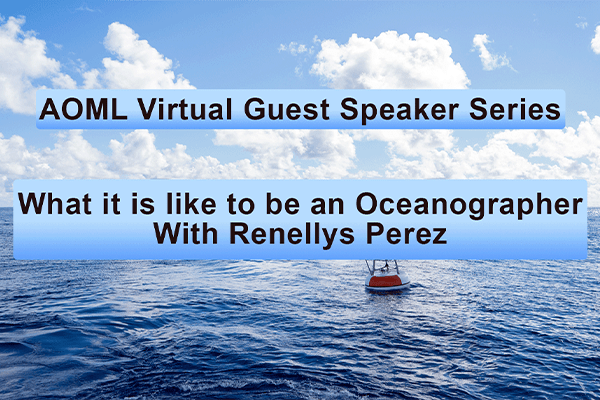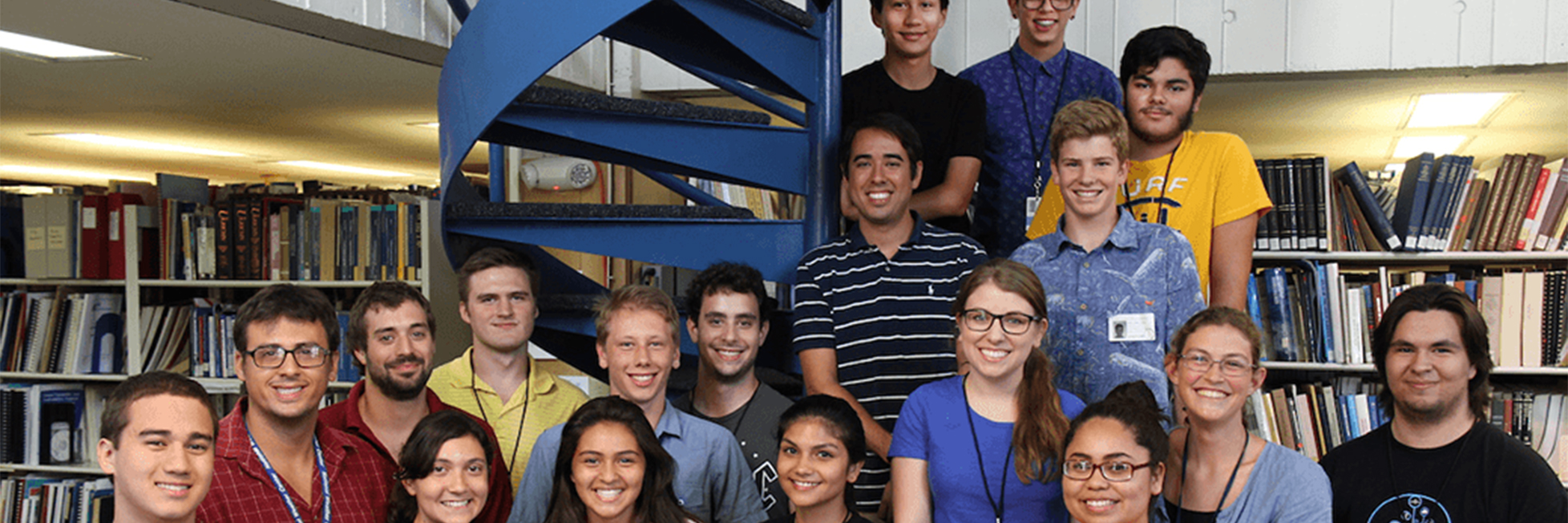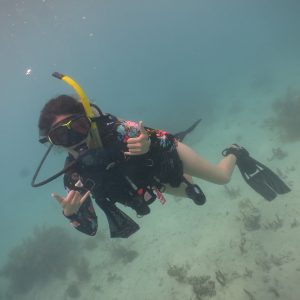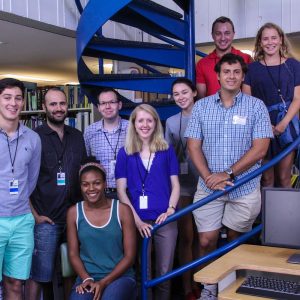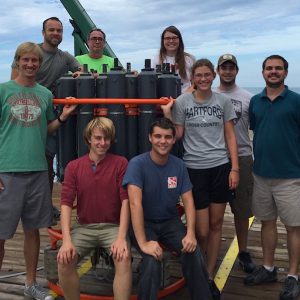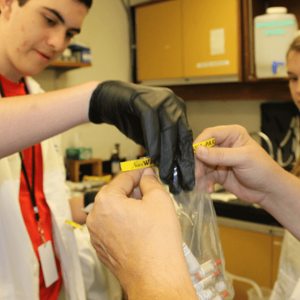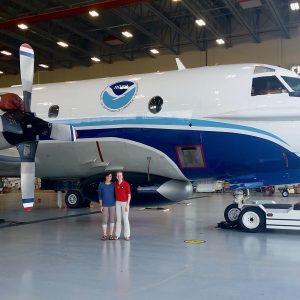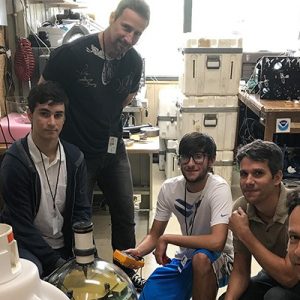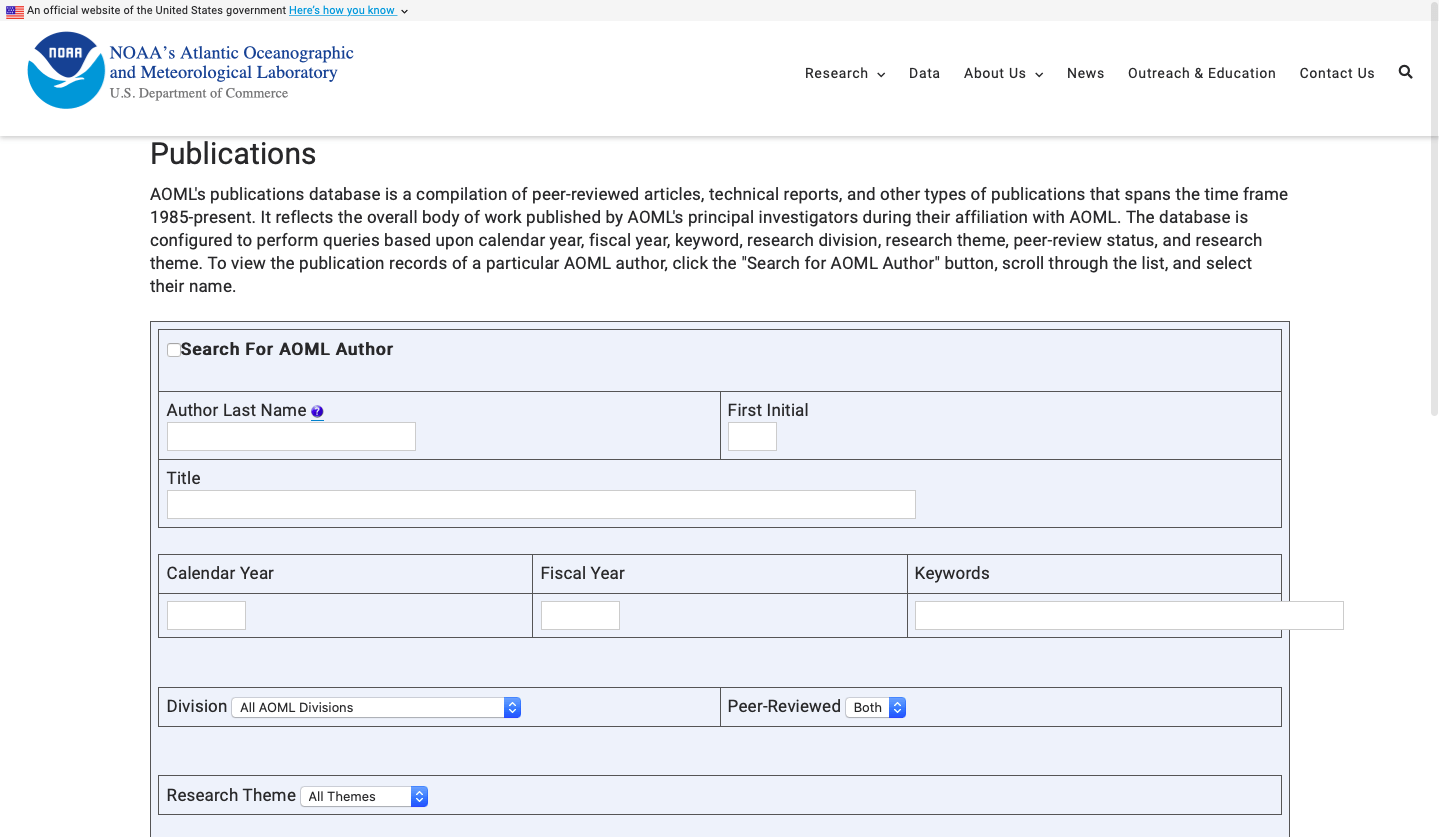AOML Question and Answer
Do you have questions for us here at AOML? We would like to answer them for you! Submit your question for AOML in the submission box below. Any question related to AOML, its mission, and its research are welcome and encouraged. Enjoy reading through previously answered submissions.
The Atlantic Oceanographic and Meteorological Laboratory (AOML) is a lab within the National Oceanic and Atmospheric Administration (NOAA). NOAA is a government agency that is made up of many different laboratories across the country. Some examples of other NOAA labs include NOAA Great Lakes Environmental Research Laboratory (GLERL) and NOAA Earth System Research Laboratory (ESRL).
Yes, AOML collaborates with multiple international partners. While AOML has many partnerships across the Atlantic, AOML’s research also has broader impacts across the global community. Some examples of these international partnerships are the Cape Eleuthera Institute in the Bahamas, the Korean Institute of Ocean Science and Technology, Australia Bureau of Meteorology, and the Norwegian Institute of Marine Research.
NOAA, the National Oceanic and Atmospheric Administration, is a government agency that researches many different aspects of our ocean and atmosphere. AOML is a laboratory within NOAA that is made up of three divisions. AOML scientists research specific topics within ocean chemistry, marine ecosystems, physical oceanography, and hurricanes.
Darwin Explains
Did you know saltwater crocodiles have returned to South Florida? Join Charlie Darwin, our crocodilian science ambassador, for bite-sized breakdowns of scientific research, regional natural history, and more!
Embark on AOML research missions with virtual reality
Have you ever wanted to join our researchers in the field? Now, through AOML’s virtual reality research missions, you can join our scientists as they fly into hurricanes, dive on coral reefs, and embark on research cruises. Explore by clicking one of the experiences below or visiting AOML’s Youtube channel on your VR headset.
Virtual Tour
We Drive Innovative Science
Facilities at AOML
Ever wonder what it’s like to work at a scientific lab? AOML’s facility is a unique and historic building that was created to make possible all of the diverse research we conduct. Take a virtual tour to learn more about the places and spaces of our lab and how we use them to collaborate and innovate in the work we do.
Engage with Us!
AOML is a proud part of the community of South Florida. We frequently participate at local events to provide education about what we do. Check out our outreach photos to see events we’ve hosted, and look below for news on events and opportunities.
Find an Expert
Looking for an expert in a particular topic? AOML provides information from experts in their field for these major thematic areas:
- Oceans & Weather, Ocean Circulation, Ocean Observing Systems, Physical Oceanography, Hurricane Observations & Modeling, Ocean Carbon, Ocean Acidification, Coastal Marine Ecosystems, Coral Reef Ecosystems, ‘Omics and others.
Contact our team to learn more.
Outreach and Media Requests
Our team is here to make sure our stakeholders, partners, internal offices and the public know about the great research being done at our lab. We also provide help with science presentations, handle internal reporting to OAR and NOAA, help field media requests and plan and staff events.
Determine the point of contact for your project on our Communications Services Page, or send a general email to AOML Communications.
Watch AOML’s Open House Webinars
We recently hosted a series of webinars about what AOML does and how it contributes to scientific advancement across the globe.
Check out the recorded webinars below.
Photo Gallery
Visit the photo gallery for images relating to our field work, events, and research subjects over the years.
Be Prepared for Hurricane Season
Frequently Asked Questions about Hurricanes
Why Don't Nuclear Weapons Destroy Hurricanes?
The amount of energy that a storm produces far outweighs the energy produced by one nuclear weapon. Additionally, radioactive fallout from such an operation would far outweigh the benefits while not altering the storm.
How Much Energy is Released from a Hurricane?
The energy released from a hurricane can be explained in two ways: the total amount of energy released by the condensation of water droplets (latent heat), or the amount of kinetic energy generated to maintain the strong, swirling winds of a hurricane. The vast majority of the latent heat released is used to drive the convection of a storm, but the total energy released from condensation is 200 times the world-wide electrical generating capacity, or 6.0 x 1014 watts per day. If you measure the total kinetic energy instead, it comes out to about 1.5 x 1012 watts per day, or ½ of the world-wide electrical generating capacity. While the latent release of heat feeds a hurricane’s momentum, only a small fraction goes into wind energy. Much more is fed back into the ocean surface as wave energy.
What Causes Tropical Cyclones?
Throughout the tropical atmosphere there is abundant energy that forces convection. However, tropical cyclone formation requires other favorable conditions such as low shear, instability, and mid-level moisture. These variables don’t often coincide, which is why cyclogenesis is fairly rare.
These factors vary with the seasons. In the Atlantic, it is usually in mid-August to mid-October when the subtropical ridge moves northward enough to allow the deep tropical flow to push disturbances off Africa over the warm seas. These African Easterly Waves are pressure fluctuations in the lower troposphere (ocean surface to 3 miles above) that travel from Africa at speeds of about 3mph westward as a result of the African Easterly Jet. About 85% of intense hurricanes and about 60% of smaller storms have their origin in these African Easterly Waves. The rest of them form from old frontal zones over warm water or from subtropical disturbances from the mid-latitudes.
Why are Tropical Cyclones Always Worse on the Right Side?
If a hurricane is moving to the west, the right side would be to the north of the storm, if it is heading north, then the right side would be to the east of the storm. The movement of a hurricane can be broken into two parts- the spiral movement and its forward movement. If the hurricane is moving forward, the side of the spiral with winds parallel and facing forward in the direction of movement will go faster, because you are adding two velocities together. The side of the spiral parallel to the movement, but going in the opposite direction will be slower, because you must subtract the velocity moving away (backwards) from the forward velocity.
For example, a hurricane with 90mph winds moving at 10mph would have a 100mph wind speed on the right (forward-moving) side and 80 mph on the side with the backward motion.
How are Hurricanes Named?
Prior to the late 19th century, hurricane were named after the fact, usually after saints’ feast days or unusual circumstances. In 1896, Clement Wragge, chief of the Queensland Weather Bureau, began using women’s names for tropical cyclones near Australia. While the practice lapsed for several decades, it was revived by Army Air Force meteorologists during World War II. The US Weather Bureau adopted woman’s name lists officially in 1953 for Atlantic hurricanes. In 1979, the lists were modified, alternating men and women’s names.
Today, name lists are maintained by the United Nations World Meteorological Organization for multiple oceanic basins. Most lists rotate every few years. In the Atlantic, it rotates every six years.
Printable Research Highlights
Explore these printable research highlights to learn more about the main AOML research topics such as how we study ecosystems, red tide, and ocean acidification in the Gulf of America. You can also find information on cutting-edge ‘Omics research, which studies genetic material found in the water column, called environmental DNA. Information is also provided on extreme weather research and the importance of improving our forecasting systems. AOML uses these fliers when communicating the importance of our research with stakeholders or presenting to Congress on Capitol Hill.
Interactive Storymaps
Featured Storymap
NOAA-led Cruise Expands Sensors for Climate Prediction
Follow along with scientists at AOML as they travel from St. Petersburg, FL to Praia, Cape Verde to service and collect data from ocean buoys in support of the PIRATA Northeast Extension project. PIRATA buoys provide critical data that are used to develop and improve predictive models of the Atlantic climate system, as well as used for ocean and weather prediction.
Biscayne Bubbles Educational Flyers
The Miami area is a fast-growing urban environment in close proximity to fragile coastal ecosystems in particular, Biscayne Bay. To help those that live on and near the bay learn about its many biological, chemical, and physical characteristics, the local Key Biscayne newspaper, The Islander, teamed up with the Virginia Key Science Community to produce this educational series. This series, named “Biscayne Bubbles” was originally published on a weekly basis in the The Islander and is now available to view online.
“Biscayne Bubbles” introduces local biota and an overview of the local research conducted by NOAA, the University of Miami’s Rosenstiel School of Marine and Atmospheric Science, and Florida Sea Grant.
To view the Bubbles, mouse over each one and click to see the PDF.
The Miami area is a fast-growing urban environment in close proximity to fragile coastal ecosystems in particular, Biscayne Bay. To help those that live on and near the bay learn about its many biological, chemical, and physical characteristics, the local Key Biscayne newspaper, The Islander, teamed up with the Virginia Key Science Community to produce this educational series. This series, named “Biscayne Bubbles” was originally published on a weekly basis in the The Islander and is now available to view online.
“Biscayne Bubbles” introduces local biota and an overview of the local research conducted by NOAA, the University of Miami’s Rosenstiel School of Marine and Atmospheric Science, and Florida Sea Grant.
To view the Bubbles, mouse over each one and click to see the PDF.
People, Places & Things
Marine Animals
NOAA SciJinks Web Game
NOAA’s Adopt a Drifter Program’s (ADP) first summer intern designed and developed Ocean Odyssey: Tracking Marine Debris, a NOAA SciJinks web game suitable for K-12 audiences.
Ocean Odyssey incorporates historic drifter data and helps middle school audiences understand how ocean surface currents transport marine debris and how users can help keep our oceans clean. The new SciJinks game is the latest addition to the ADP’s growing list of resources for educators! Teachers can now introduce the topic of ocean surface currents and marine debris in an informative and fun manner.
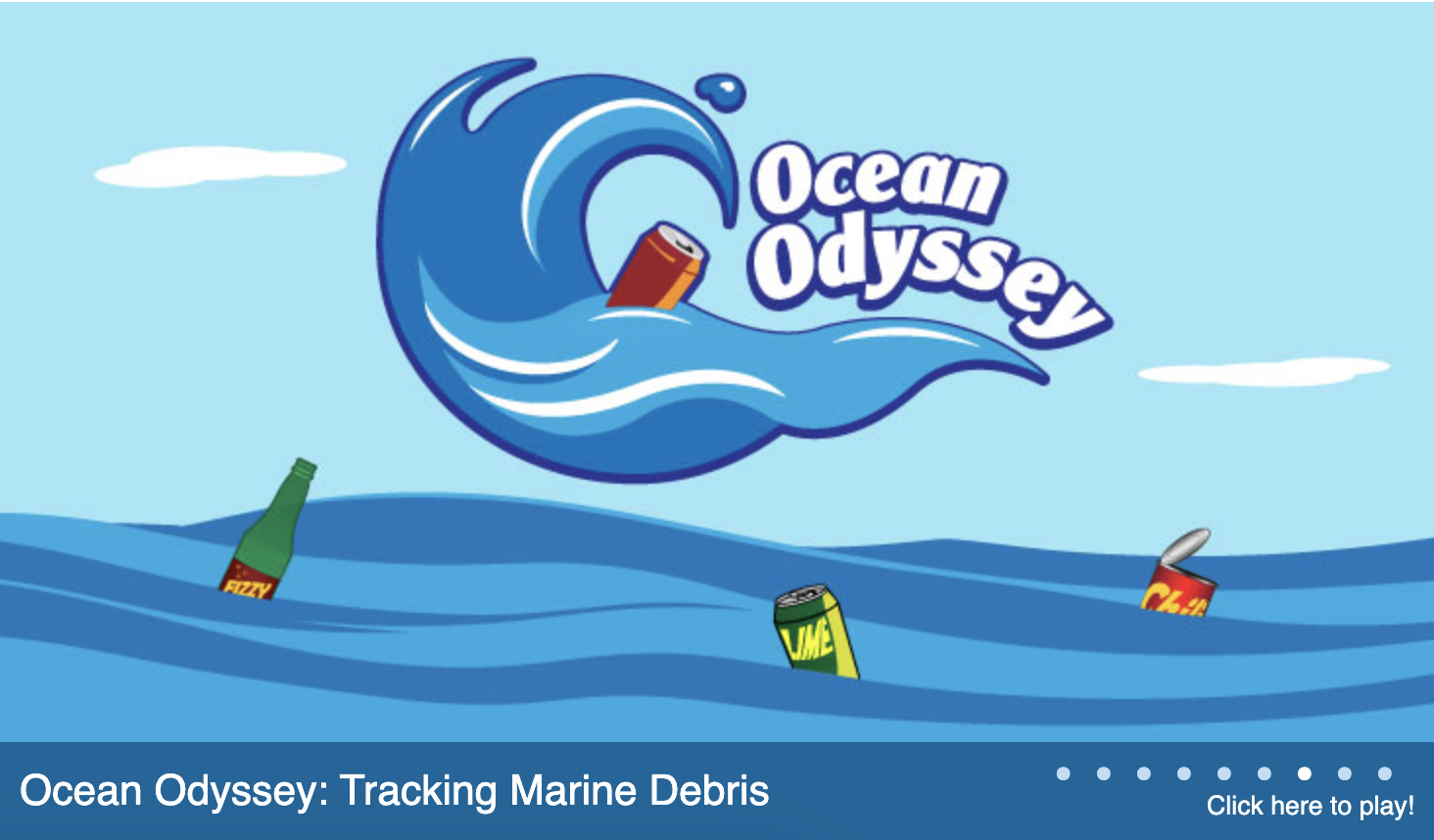
AOML Scientist Explains Steering Flow
How Hurricanes Move
Gus Alaka, a Hurricane Hunter scientist at AOML got an inquiry from a student about how hurricanes move, especially on the east coast of the U.S. He put together a few slides that explain what steering flow is and how it affects landfalling storms. Download the PDF powerpoint here, or click through the slides to the right to learn more.
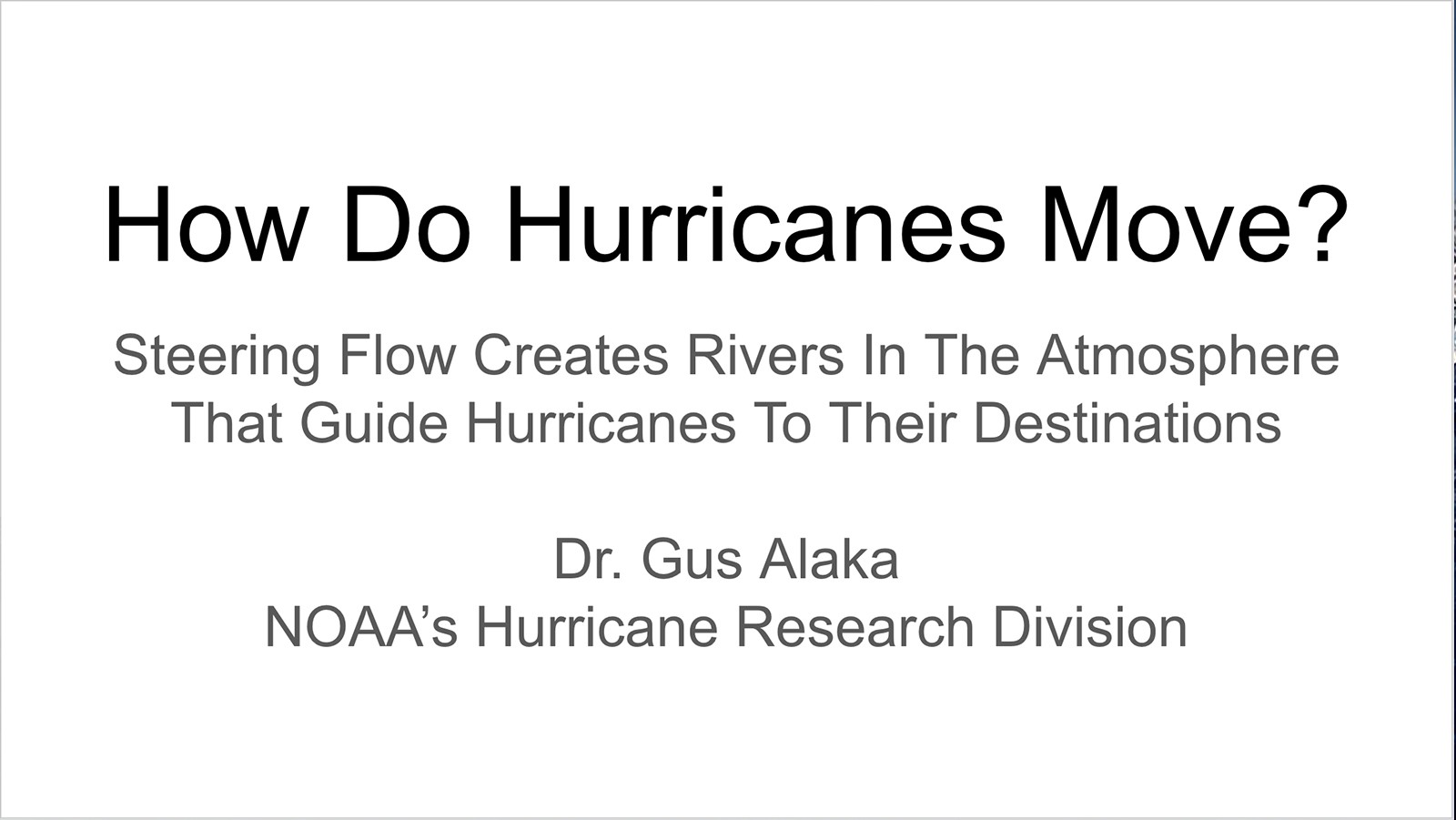
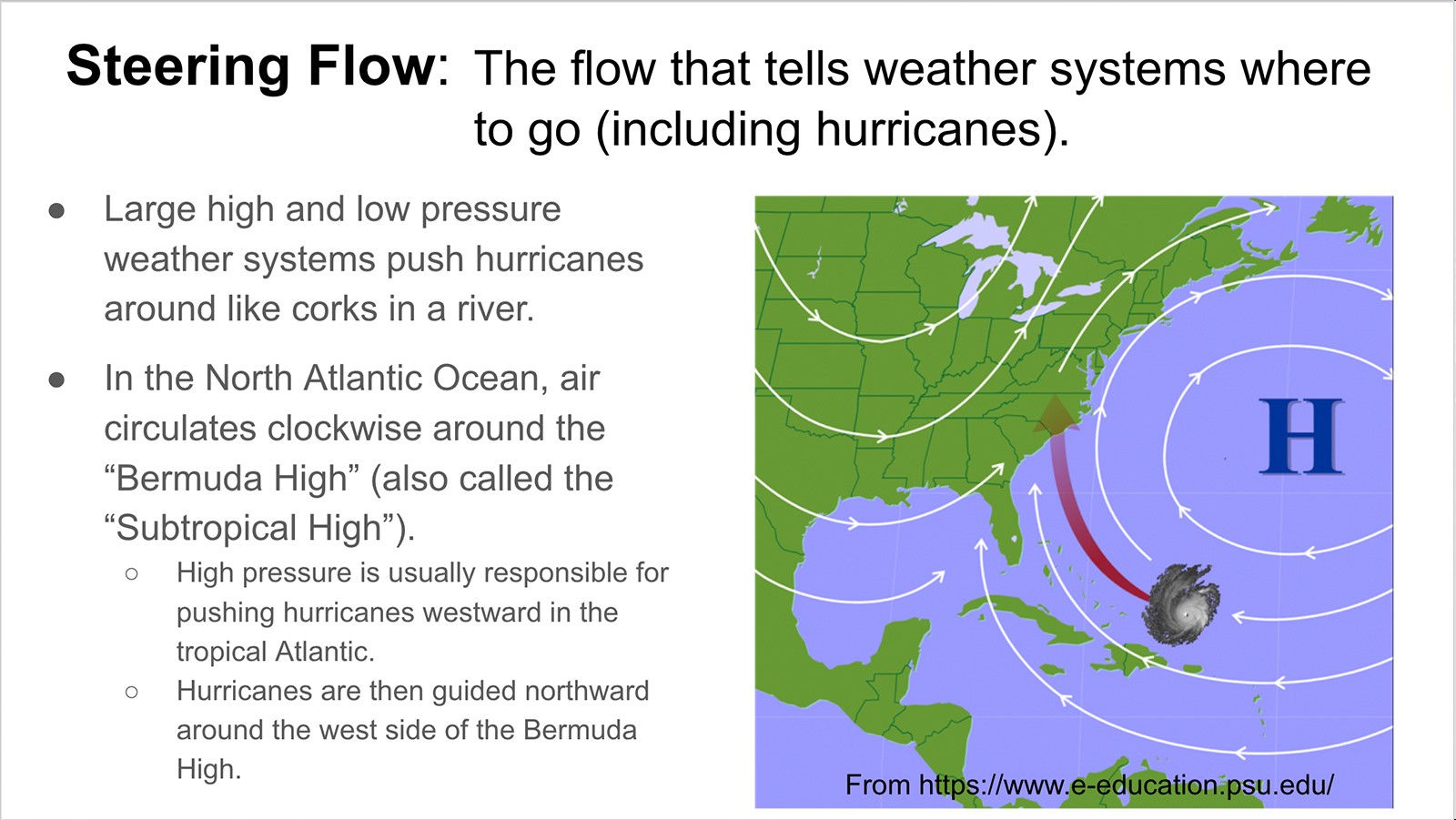
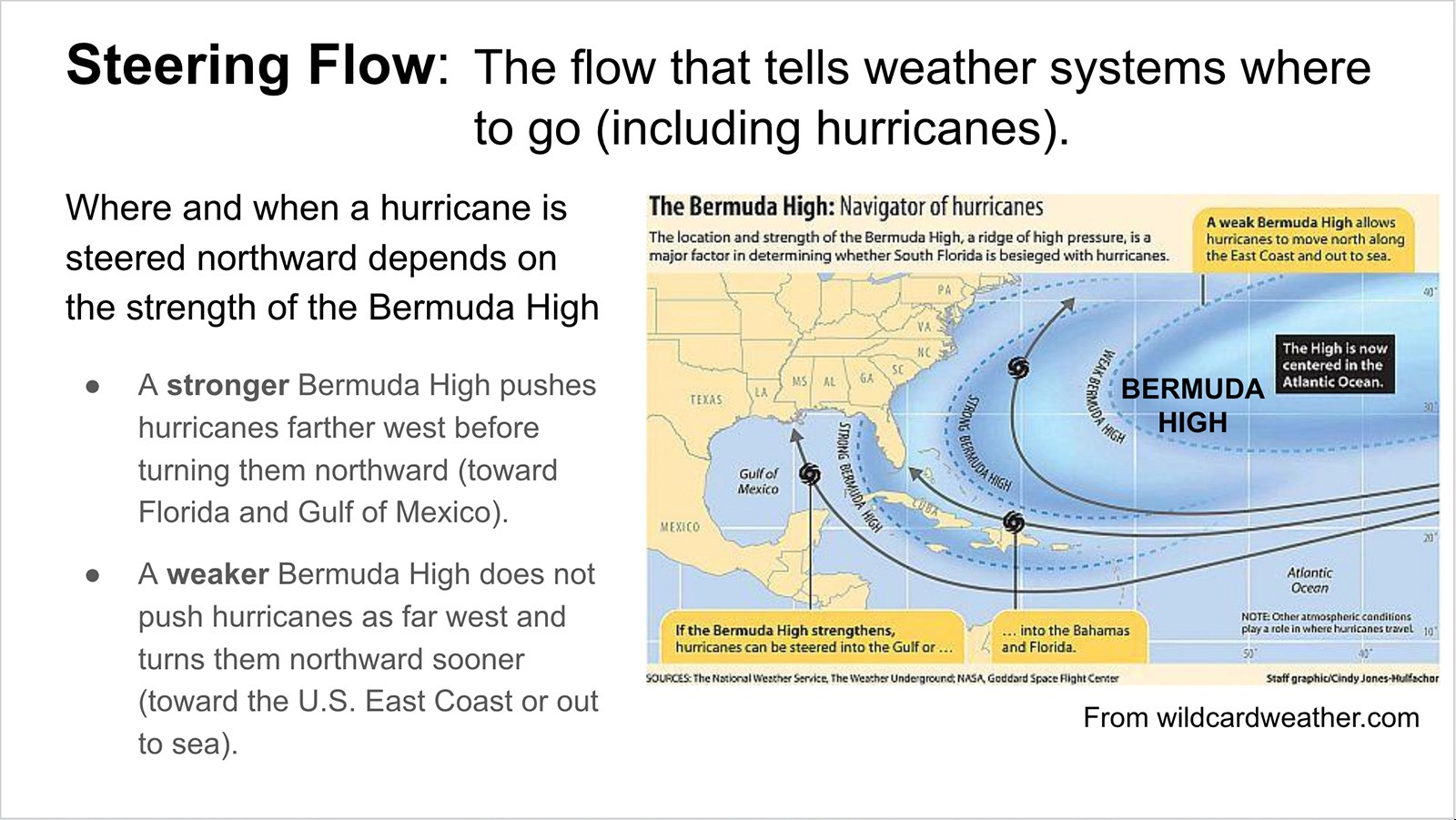









Exploring Environmental DNA Video Series
Join Megan Deehan, a marine conservation student at the University of Miami, and Nathan Formel, a researcher at NOAA’s Atlantic Oceanographic and Meteorological Laboratory (AOML) in an exciting series exploring environmental DNA or “eDNA”, environmental DNA sampling technology developed at NOAA AOML, and an at home, hands-on activity for DNA extraction.
Engage, explore, explain, elaborate, and evaluate (5 E’s) the concept of environmental DNA by including the “Exploring Environmental DNA” video series in classroom lessons. The videos follow a flexible format that can be watched in order or individually, as needed, to supplement an entire lesson or lesson segment, classroom discussion, and activity. See suggested lesson ideas below for the 5 E’s.
Education Standards Supported by the ``Exploring Environmental DNA`` Video Series
Next Generation Sunshine State Standards
SC.5.N.1.3: Recognize and explain the need for repeated experimental trials.
SC.5.N.2.2: Recognize and explain that when scientific investigations are carried out, the evidence produced by those investigations should be replicable by others.
SC.35.CS-CC.1.3: Identify ways that technology can foster teamwork, and collaboration can support problem solving and innovation.
SC.6.N.1.2: Explain why scientific investigations should be replicable.
SC.6.N.1.5: Recognize that science involves creativity, not just in designing experiments, but also in creating explanations that fit evidence.
SC.6.N.2.3: Recognize that scientists who make contributions to scientific knowledge come from all kinds of backgrounds and possess varied talents, interests, and goals.
SC.7.L.16.1: Understand and explain that every organism requires a set of instructions that specifies its traits, that this hereditary information (DNA) contains genes located in the chromosomes of each cell, and that heredity is the passage of these instructions from one generation to another.
SC.68.CS-CS.6.6: Design and demonstrate the use of a device (e.g., robot, e-textile) to accomplish a task, individually and collaboratively.
SC.68.CS-CP.3.1: Select appropriate tools and technology resources to accomplish a variety of tasks and solve problems.
Next Generation Science Standards
MS-LS2-2: Construct an explanation that predicts patterns of interactions among organisms across multiple ecosystems.
MS-LS1-5: Construct a scientific explanation based on evidence for how environmental and genetic factors influence the growth of organisms.
MS-ESS3-3: Apply scientific principles to design a method for monitoring and minimizing a human impact on the environment.
MS-LS2-5 Ecosystems: Evaluate competing design solutions for maintaining biodiversity and ecosystem services.
Ocean Literacy Principles
#5: The ocean supports a great diversity of life & ecosystems.
#7: The ocean is largely unexplored.
Supplemental Resources About Environmental DNA
Environmental DNA News Stories
New eDNA Sampling Upgrade -Subsurface Automated Sampler for Environmental DNA
The DNA Found in Sea Turtle Poop Could Be Scientists Newest Monitoring Tool
International Cooperation Drives Oceanographic Discovery
eDNA Connections in Marine Food Webs
Tracking Marine Life with Invisible Clues: eDNA Enhances Ecosystem Monitoring
Publications
Formel, N., Enochs, I. C., Sinigalliano, C., Anderson, S. R., & Thompson, L. R. (2021). Subsurface automated samplers for eDNA (SASe) for biological monitoring and research. HardwareX, 10, e00239. https://doi.org/10.1016/j.ohx.2021.e00239
Chavez, Min, M., Pitz, K., Truelove, N., Baker, J., LaScala-Grunewald, D., Blum, M., Walz, K., Nye, C., Djurhuus, A., Miller, R., Goodwin, K., Muller-Karger, F., Ruhl, H., & Scholin, C. (2021). Observing life in the sea using environmental DNA. Oceanography, 34(2), 102–119. https://doi.org/10.5670/oceanog.2021.218
Virtual Guest Speakers
AOML is excited to provide a new Virtual Guest Speaker section that features presentations by AOML scientists. These presentations are about their current research and why they love being scientists. Each video is aimed towards a specific grade level between K-12, and features questions previously asked by students in that age group. We hope educators can use these guest speaker presentations to supplement their curriculum when teaching environmental topics.
NOAA-wide Educator Opportunities
While AOML provides multiple educator resources and materials, there are also opportunities throughout NOAA that we think are valuable to advertise to the educators who visit our page. Check out NOAA Education’s complete list of NOAA Educator Opportunities, which includes workshops, fellowships, trainings, course materials, and more.
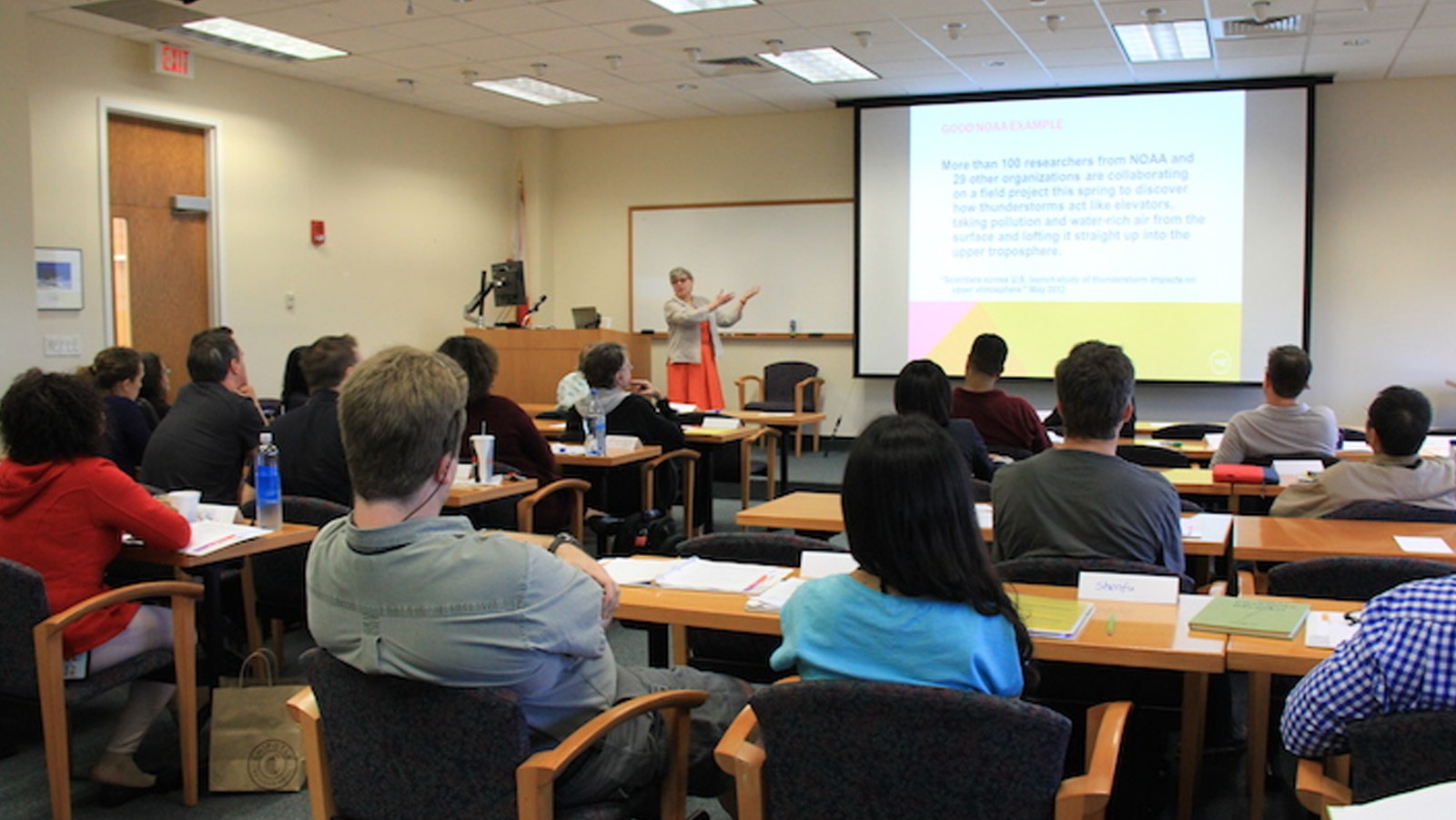
Student Opportunities
High School Internships
Ever wonder what it’s like to work in a NOAA lab? AOML offers internships for high school students to gain experience with doing hands-on research and conducting science to help our community and serve the nation. We provide internship opportunities for high school students in the areas of Biology, Chemistry, Physical/Earth Science, Physics, and Environmental Science.
Email us for more information on how you can become an intern at NOAA’s Atlantic Oceanographic and Meteorological Laboratory.
Graduate and Undergraduate Internships
Our internships, fellowships, and scholarships provide students with opportunities, hands-on learning and skills development in Oceans & Weather, Ocean Circulation, Ocean Observing Systems, Physical Oceanography, Hurricane Observations & Modeling, Ocean Carbon, Ocean Acidification, Coastal Marine Ecosystems, Coral Reef Ecosystems, ‘Omics and others. Work experience under the guidance and supervision of supportive scientists and engineers who have relevant knowledge and skills in their field.
Prepare for your career with valuable lab experience under one of our scientists. AOML offers internships for a wide variety of research interests including:
Ocean Chemistry & Ecosystems
Marine Chemistry, Genomics, Proteomics, Transcriptomics, Coral Reef Ecosystems, Integrated Ecosystem Assessments, and Ecosystem modeling
Hurricane & Atmospheric Research
Conduct research with hurricane observations under the supervision of our team of hurricane scientists. Researchers at AOML conduct experiments using our state-of the-art hurricane research models, look at past data
Physical Oceanography and Observations Engineering
Use ocean observation data and AOML products and methods to monitor upper-ocean conditions.
For NOAA-wide internships, visit NOAA’s Student Opportunities page or download the PDF below for detailed information about NOAA student and early career opportunities.
NOAA-wide Student Opportunities
While there are multiple student opportunities within AOML, there are also opportunities throughout NOAA that we think are valuable to advertise to the students who visit our page. Check out NOAA Education’s complete list of NOAA Student Opportunities, including internships, fellowships, scholarships, and more.
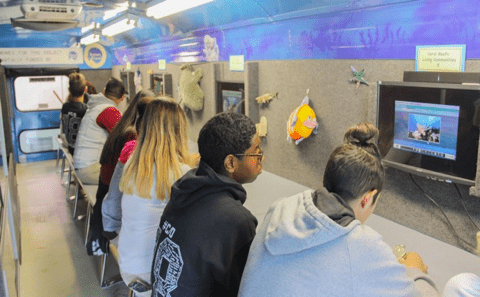
AOML Publication Database
All AOML publications can be found in the AOML publication database and can be searched for by author, year, topic, division, and more. Students can use this archive to easily access AOML sources when doing research on the topics being studied at AOML.
How to Cite AOML
When citing a web page with publication date
When citing a webpage on the AOML website that has a publication date, such as a web story or blog post, please use the following citation format:
NOAA. River Runoff Creates a Buffer Zone for Ocean Acidification in the Gulf of America. Atlantic Oceanographic and Meteorological Laboratory website, https://www.aoml.noaa.gov/river-runoff-creates-a-buffer-zone-for-ocean-acidification-in-the-gulf-of-mexico/, 2/15/22.
When citing a web page without a publication date
When citing a webpage on the AOML website that does not have a publication date, such as the outreach and education page or the data page, please use the following citation format:
NOAA. Student opportunities at AOML. Atlantic Oceanographic and Meteorological Laboratory website, https://www.aoml.noaa.gov/outreach-education/#students/, accessed on 3/13/22.
